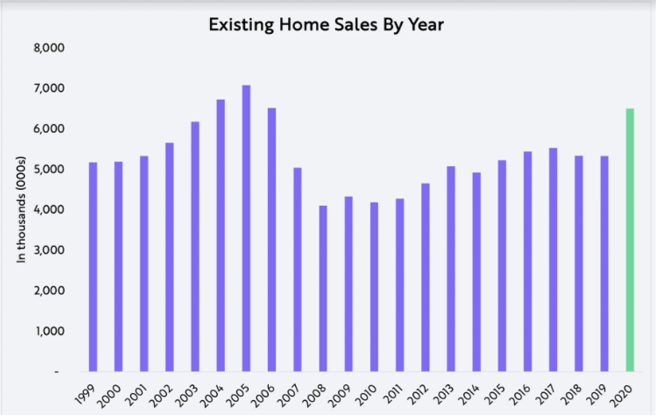Better late than never I suppose.
One of the so-called “Big 4” banks here in Australia have come out with their latest economic report.
These ANZ Bank economist initially called for a broad 10% drop in property values in Australia in its previous report mid-year.
It has now called that view as “too pessimistic”.
We made mention over the last 6 months how it was extremely likely the coordinated stimulus measures governments around the world would eventually work during this COVID shutdown.
And the reason we gave you was it was designed purely to achieve one aim and one only.
To provide whatever it took in terms of stimulus to support the price of land.
And it has, and is, working as designed.
Hence the set-up. Expect this enormous injection of stimulus money to trigger serious problems in the future. But we are many years away from that.
Perhaps I’ve been harsh here; let’s look at the conclusions these economists reached.
From the report “Australia housing: a strong 2021”,
“Our view that house prices would decline around 10 per cent, peak to trough, has proven too pessimistic: low rates have trumped factors like elevated unemployment and low population growth” ANZ economists Felicity Emmett and Adelaide Timbrell said.
“Government income support and the deferral of home loan repayments have also helped support the market. The RBA’s recent rate cut, the further decline in fixed mortgage rates and the prospect of low rates for some years will all add to the momentum currently in the market.”
From one extreme to the other, all in 7 months.
I’m sure the fact this report comes out after the relaxing of responsible lending laws in Australia was announced by government was a happy coincidence.
No wonder the banks are suddenly bullish on property.
And the real estate cycle continues to turn.
Not just in Australia but around the world.
And its happening quickly too. The speed of the rebound is astonishing.
It’s worth your time to start identifying some trends that are developing here.
You can then follow these as the 18.6-year Real Estate Cycle progresses to a peak sometime later this decade. And with luck, take advantage of the opportunities they present.
The Property Sharemarket Economics (PSE) team study the 18.6-year Real Estate Cycle, 14 years up and 4 down with a mid-cycle recession interrupting the 14 years’ expansion.
We have shown our members that we are right in the middle of the mid-cycle recession of the current real estate cycle.
And with land prices now almost fully recovered from their COVID lockdown lows, now is the time to begin examining where we go next.
And what exactly can drive land prices even higher?
Believe me, these drivers are varied, and they are global. And they are appearing everywhere right now.
Take this excerpt from a recent conference call from US Realtor Zillow’s CEO Rich Barton,
“In September, we saw the pace of existing home sales climb to the highest level since 2006, exceeding 6.5 million annualized units”

Source; ARK investments
On the one hand, this is a little old news.
We have told you before the combination of 50-year low mortgage rates and a desire for more space (due to COVID) is leading to a huge surge in US home sales.
But Zillow is no ordinary Realtor. They provide to their clients “Zillow Offers”, a next generation real estate tool which allows you to close a deal digitally with an online notary.
With this function you could literally buy a house sight unseen and handle all the legal work online. Imagine the time saved by this?
Rich Barton said during the above conference call that during the 3rd quarter Zillow recorded almost 75% of all home purchases were done using this tool.
Companies like Zillow and Redfin in the US have led the charge of simplifying the process of buying and selling real estate.
A long overdue disruption that will only make it easier for homebuyers to digitally outbid rival offers.
All from the comfort of your lounge room.
The COVID lockdown has brought about such a trend. You need to closely follow it. Because it represents the future of real estate transactions.
And it’s here to stay.
We now look at one of the most hated of all taxes when it comes to property, stamp duty.
Right now, various governments such as those in the United Kingdom (UK) and in Australia are debating whether this duty needs to be replaced or scrapped altogether.
For instance, in Australia the New South Wales (NSW) Government has today announced they are “considering a once in a generation change of giving home buyers the choice to pay either stamp duty and land tax (where applicable) or a new smaller annual property tax”.
The NSW government are debating whether to give buyers and sellers the choice of either paying an upfront stamp duty cost or choose a land tax amount paid annually.
CEO of Upside Realty Adam Rigby explained the benefits as.
“Firstly, removing this barrier to purchase should see an increase in liquidity, favoring downsizers, for which the stamp duty burden can easily outweigh benefits of leaving the old family home, and first home buyers, who will gladly take any help they can get.”
Meanwhile a looming stamp duty holiday introduced in the UK in July 2020 and due to end March 2021 is seeing a race to beat the deadline.
This is causing a domino effect across the market as buyers and sellers rush to make sure they secure their savings (more about this in a moment).
According to a report recently released by Rightway, during the four weeks from Oct. 11 to Nov. 7, the number of sales agreed—the first step in purchasing a property before a transaction is completed—on homes priced between £400,000 and £500,000 surged 106% compared to last year.
In comparison, the number of sales being agreed for properties priced between £100,000 and £200,000 was up just 16% compared to this time last year.
The behaviour being demonstrated here is clear.
The higher the purchase price, the higher the savings will be for the buyer.
Only, the so-called savings are an illusion.
But as I mentioned at the start, the two examples above of different governments tinkering with stamp duty and land tax, and the explosion of online disruption to the buying and selling process for property simply point to one thing.
One gigantic set up.
But the outcome now is clear.
The price of land around the world will not be cheaper over the next decade than it is right now.
You really need to start looking at property currently.
And look to expose your own portfolio to property related assets.
Because history shows us that right now governments around the world have your back.
Its like a one-way bet; thanks to government spending your downside is covered.
This is allowing smart investors to capture all the massive progress this spending will bring in the coming years.
Identifying a once in a decade buying opportunity is only the start.
One of the best decisions you can make right now is join the PSE team on this journey.
Begin to learn about the cycle, why it repeats and where the real opportunities to change your life financially will present themselves.
And most importantly when they appear.
So, don’t waste another day, come on board, and become a member of the Boom Bust Bulletin.
This is the only publication in the world that will teach you what you need to know about the real estate cycle.
Best wishes

Darren J Wilson
and your Property Sharemarket Economics Team
P.S – Go to our Facebook Page and follow us for right up to date information on the 18.6-year Real Estate Cycle.


